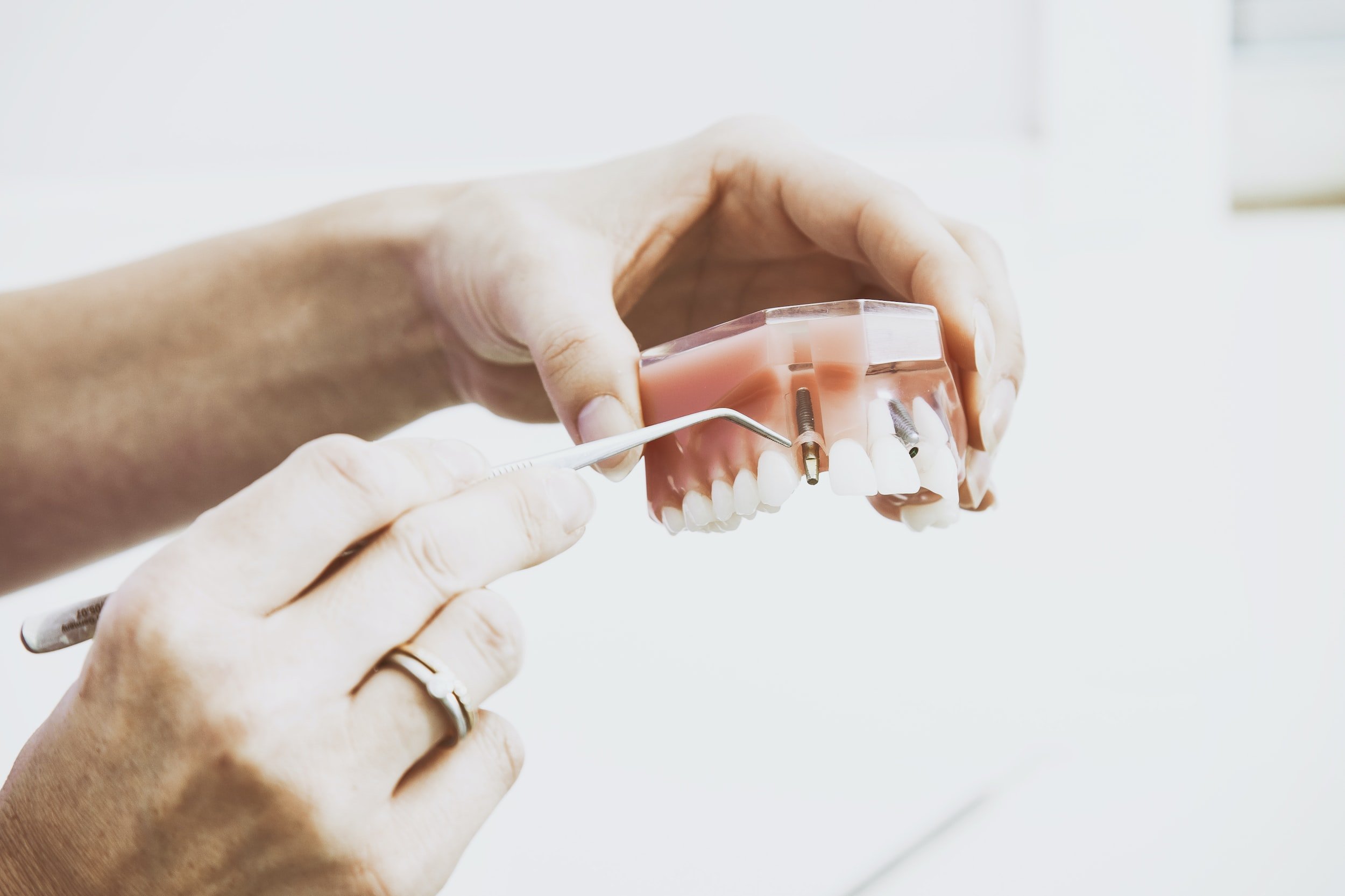
Dental Implants
-
A dental implant is used to replace the roots of teeth that are missing.
It is a strong post made of biocompatible metals or ceramics that is inserted into the jawbone and acts as a base for fixing single crowns, multiple tooth bridges, or can be used as an anchor for a complete denture.
-
Dental implants are often the best option to replace missing teeth. They preserve the quantity and quality of the jaw bones by preventing the shrinkage that occurs when a natural tooth is lost. This can help to maintain a healthy jaw and preserve your face shape.
Dental implants can be used to restore your smile and self-confidence. They can replace single or multiple teeth, and as they feel like your natural teeth so you can be more confident and feel more comfortable talking, smiling, eating, and kissing too. As the implants are anchored into the jawbone and are as secure as a natural tooth, you can bite and chew naturally and eat the food you like.
-
Treatment time can take 3 to 4 months from implant placement until you have the final prosthetic restoration. The procedure involves;
1. Consultation and examination
Your dentist will assess your dental and medical history and explain your different treatment options.
2. Clinical assessment and planning
To be a suitable candidate for implant treatment you need enough healthy bone to anchor an implant. X-rays and sometimes a specialised CT scan may be used to show bone quality and quantity. If there is not enough bone, there are options to build up bone again.
3. Tooth extraction (if applicable)
4. Implant surgery
At this appointment the implant(s) will be inserted into the bone. Your dentist will make a small incision into the gum before the implant is placed. This is usually done under local anaesthetic. Sedation can be arranged for patients who suffer with dental anxiety.
On top of the implant your dentist will place a healing cap. This helps to shape your gums during healing. You will have stitches to close the incision.
At this stage you will still have a visible tooth gap. Depending on where and how big the gap is, you can have either a temporary denture or bridge.
Now it will take time for the bone and soft tissues to properly heal around the implant. This can take up to 6 months, but is usually around 3 months.
5. Postoperative review and suture removal
Approximately two weeks after surgery you will return to your dentist who will check on the healing and remove any stitches.
6. Impression taking and prosthetic restoration production
When the implant has completely healed, it will be time to start the restorative step. At this appointment your dentist will take an impression of the implant and your mouth
7. Prosthetic restoration fitting
When the final crown, bridge or denture is ready, your dentist will fix it to the implant(s) and make the necessary adjustments to ensure your bite is comfortable, functional and it looks as planned. From now on you will be able to eat, smile and laugh naturally again.
-
If one or more teeth are missing you will be left with a space. You have the choice between an implant solution or conventional treatment. Conventional treatments can include:
A conventional bridge
A conventional denture.
-
Dental implants are not usually available on the NHS, only offered to certain groups of patients; those requiring rehabilitation after head and neck cancer for instance. Implant therapy is mostly available privately. The costs of treatment will vary according to your individual needs, the number of missing teeth and the complexity of the treatment. Your dentist will be happy to discuss your clinical needs and offer you a quote on this basis.
Prices start at £3000

